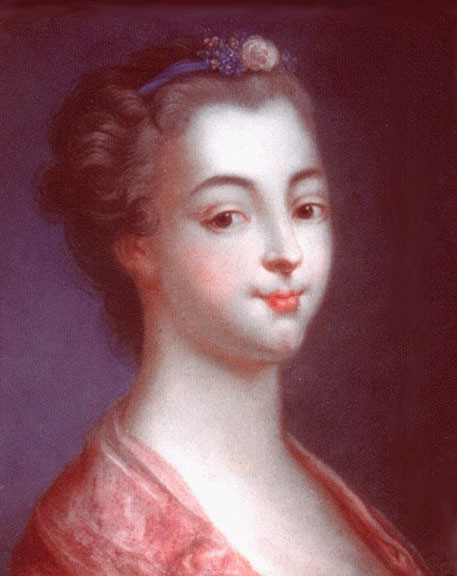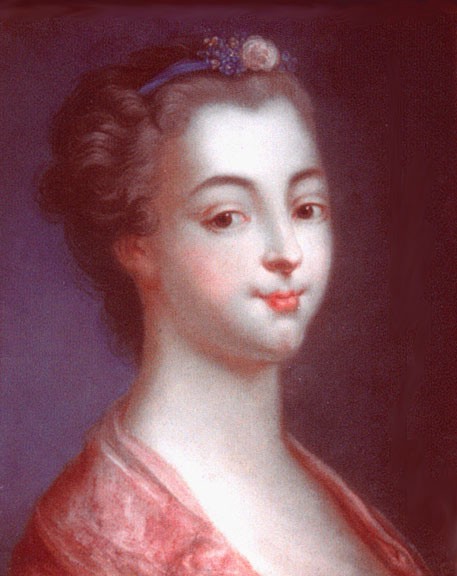Rose Bertin, The First Celebrity Stylist
by Courtney Iseman


The first celebrity stylist predates Instagram by a long shot. Thanks to reality TV and larger-than-life personalities like Rachel Zoe, celebrity stylists have become famous in their own rights. This phenomenon has pulled back the curtain on a formerly behind-the-scenes role, allowing us to see just how responsible stylists are for creating the looks we associate with our celebrities. As a career, it seems somewhat recent: a red carpet necessity that developed with increased paparazzi, media attention, tabloid fashion sections and social media. But the origins of the job actually go all the way back to the eighteenth century.
Rose Bertin was born as Marie-Jeanne Bertin in 1747 outside of Paris. As a child, she became obsessed with having her palm read by a fortune teller in her town. Her family had barely enough money to scrape by; she starved herself in order to pay the palm reader with her own food. According to Rose Bertin: The Creator of Fashion at the Court of Marie Antoinette by Emil Langlade, the palm reader told Bertin that she would “rise to great fortune, and one day wear a court dress.” An ambitious hard worker with a new specific goal in mind, Bertin set out for Paris when she was 16 and became an apprentice at a millinery shop.
During her apprenticeship, Bertin was sent on an errand to deliver dresses to the Princesse de Conti and spent some time chatting with someone she thought was a chambermaid. That chambermaid turned out to be the princess, and while Bertin was mortified, the princess found her charming and called on her to work on the bridal trousseau of an upcoming royal wedding.
The Princesse de Conti and the Duchesse de Chartres became devoted friends and clients of Rose. There was the unfortunate complication of the Duchesse’s husband, the Duke du Chartres, falling in love with Bertin — even threatening to kidnap her to force her to become his mistress — but Rose proved to be all business. She stood up to him, telling him he’d clearly forgotten his place. The squashed love triangle didn’t stand in the way of the Duchesse’s support for Rose: she helped Bertin set up her own shop, and through her new court connections, Bertin met the ladies who were chosen to wait on the new dauphine, Marie Antoinette. Bertin’s first commission for Antoinette was the first ensemble that she would ever wear in France, a look that would symbolize leaving her life in Austria behind to become a Frenchwoman.
It was two years before Antoinette would place her own order with Bertin after arriving in France, but soon, a clothing-driven bond was forged between the two. Bertin wasn’t just taking orders and churning them out for the future queen. She met with Antoinette on an almost daily basis to discuss the looks to be presented, to cultivate an identity and an aesthetic that the court and subjects would come to expect and be excited by, crafting an image of opulence.
Bertin might have been Antoinette’s right-hand woman and the creator of her distinctive look, but she had a business to contend with, too. According to the research by Tracy V. Wilson, Bertin would keep the queen and the court in a constant vicious cycle of sartorial catch-up. After creating one of her trendsetting ensembles for Marie Antoinette, Bertin would release the look to noble women who were dying to dress like the queen. As soon as Antoinette saw women walking around court looking like her, she’d call for a new look that was bigger, better and different. Bertin was raking in the profits from Antoinette’s insatiable hunger for one-of-a-kind outfits and the nobility’s desperation to keep up.
Bertin was ahead of her time when it came to shrewd business and aggressive marketing tactics, but that’s not what took her reputation into dangerous territory. This was, of course, the time when France was plunging further and further into economic ruin. Helping America with its revolution had steered France into bankruptcy, and poor harvests leading to rising food prices didn’t help. People were starving and the government didn’t have a lot of capability to help them. Maybe they should have looked into Marie Antoinette’s annual clothing budget for some bread money: once she was queen, Antoinette’s’s ever-growing yearly allowance, just for clothes, had grown to today’s equivalent of $3.6 million, according to The New Yorker. Rose Bertin was dreaming up lavish ensembles made from extravagant fabrics and supplying the queen with enough outfits to change multiple times a day. The queen often overspent. In the eyes of the poverty-stricken majority population of France, the Third Estate, Bertin was the woman behind the government’s frivolous indulgences made instead of helping subjects eat. The Third Estate couldn’t grow or afford grain, but Antoinette’s coronation gown was encrusted with sapphires and so heavy that a special presentation stand needed to be built to help the new queen remain upright during the ceremony.
Bertin was actually referred to as “The Minister of Fashion” by Marie Antoinette’s critics. The press and the public had already figured out that Bertin was further ramping up the already-too-high spending at court by playing on the “keeping up with the Joneses” tendencies of both the queen and the noble ladies. Furthermore, Bertin was also getting special privileges: a relative of Rose’s was arrested for publishing books containing satire about government members, but because of Bertin’s position, the relative’s prison sentence was shifted down to exile, which was then shifted further down to, well, nothing. She was also acknowledged during royal processions and received VIP seating at the theatre — luxuries not ever given to a milliner.
Despite acting as a symbol for extravagance, Bertin avoided the guillotine during the Revolution’s bloodthirsty reign: her only bad luck was a drastic downturn in business. Her noble clients no longer had the means to pay her, and the royal family had been imprisoned and dethroned. But Bertin continued to deliver — albeit much simpler — gowns to Marie Antoinette, the woman who had put her on the map, the woman who had let her shape her public image, the woman who had made a dressmaker a star during a time when dressmakers were not made stars.
Once Antoinette had been executed, Bertin fled to London and set up a shop there, but soon returned to France once the dust of the Revolution had settled. Her business never recovered to the point it had once been, but perhaps she knew she was lucky to maintain her business at all, as well as her head. Continuing to remember those who had once contributed so greatly to her success, she worked with old friends and clients who she knew could never really pay her. She died in 1813 at the age of 66 in her country home and was remembered for her kindness and talent rather than her questionable techniques or contribution to the insulting indulgences of the royal court.
Bertin’s name didn’t make the lasting impression that Marie Antoinette’s did, but her career blazed the trail for a whole line of work indispensable to public figures today. She took clothes from being simple garments to that could help someone craft an entire image to show to the rest of the world. She had the vision to arrange hair and makeup and accessories to complement her dresses. And incredibly, in a time when women were just not independent, Bertin was a strong and smart businesswoman that stood on her own — extra perks and protection from royals notwithstanding. One could argue that celebrity stylists promote a spirit of overindulgence in Hollywood, and propel the constant spending done by stars in a time when so many are suffering in poverty. But there will always be people spending tons on fashion, and that’s not to say those people aren’t allocating money to those who truly need it, too. Rose and celebrity stylists today are serving a need that would exist no matter what. Rose paved the way for businesswomen, stylists and designers. You don’t know her name, but you know her work. And that might be the greatest testament to her and any celebrity stylist today.
Courtney Iseman is a copywriter in fashion and an all-kinds-of-writer in fashion, lifestyle and music for publications like i-D, Gothamist and Racked NY. Follow her on Twitter at @sobbingonfifth for thoughts on heavy metal, pugs and the poor manners of NYC subway commuters.
Image via Wikimedia Commons.